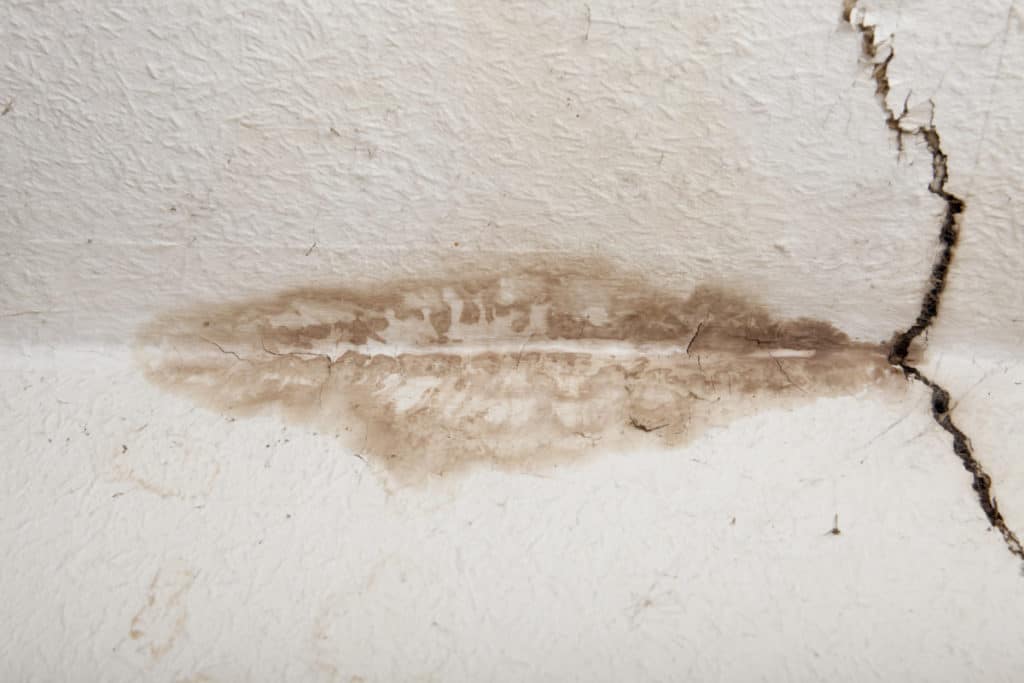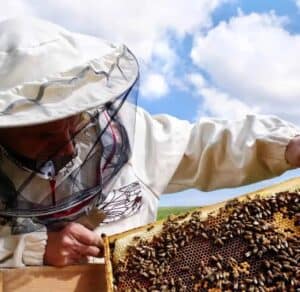Does Homeowners Insurance Cover Bee Removal? How Expensive?
It is surprising how quickly honeybees can damage your property. If bees are not quickly removed or relocated, you could end up paying thousands of dollars in repairs. Now, you may be thinking your homeowner’s insurance will cover the cost of bee removal and repairs, but the answer might surprise you.
Most homeowner’s insurance does not cover bee removal or repair costs. Damage by bees (insects) is damage over time, rather than sudden loss, and is not covered. If the infestation is large enough to involve an insurance claim it should have been treated sooner and is considered preventable.
It is recommended to pay the upfront cost for bee (insects) removal rather than risk the considerable repair costs down the road. In some case the damage caused by honeybees can be extensive enough to make your property uninsurable until repaired.
In this post I will discuss:
- Realistic expectations of insurance coverage and home warranties.
- The average costs of bee removal.
- The amount of damage honeybees can cause.
- Natural methods for keeping bees away.
Homeowner’s Insurance Coverage – Honeybee Removal and Repair Costs

It is uncommon that honeybees will cause thousands of dollars in damage to a person’s property. Since most homeowners will have honeybees removed quickly to prevent any further property damage and to address any safety concerns with the possibility of bees stinging people.
It is when the bees go unseen for months at a time and in rare occasions years that can cause an incredible amount property damage.
I spent several hours researching online and speaking with various insurance company representatives inquiring about homeowner’s insurance coverage for bee removal and repair costs.
100% of the insurance companies that I researched or spoke with told me that no homeowner’s insurance policy would cover honeybee removal or cover the cost of repairs caused by a bee infestation.
Insurance companies categorize honeybees, and any bees for that matter, as an insect infestation. Bees and other insects cause damage over time, rather than sudden loss, and bee removal and any associated repair costs are not covered by a homeowner’s insurance policy.
It is the insurance companies’ stance that if a honeybee infestation is large enough to warrant an insurance claim, it should have been treated and prevented much earlier.
Therefore, the cost for bee removal and the cost for repairs is not covered by insurance. This is like homeowner’s insurance not covering any property damage caused by fleas, ants, and termite infestations.
If the bee infestation has been left untreated for to long your property could become uninsurable. On rare occasions this has happened to people who had significant property and structural damage.
Insurance companies have issued non-renewal notices because of this. The property is then considered uninsurable until the infestation is removed, and all repairs completed.
If you do have a bee infestation, I recommend the following steps:
- Identify the type of bee. Is it a honeybee, wasp, hornet etc.?
- Identify how many nests, and access points.
- Estimate how long the bees have been in the location.
- If it is a honeybee infestation contact a local beekeeper or a company who specializes in relocating honeybees.
- If it is a wasp, hornet or other type of bee infestation contact a local pest removal company to safety remove the insects.
Does a Home Warranty Cover Honeybee Infestation Removal

Unlike homeowner’s insurance many home warranty companies do offer a limited form of pest control coverage. What is included in this coverage can vary between different home warranty companies and specific regions. But will these warranties cover bee infestations?
The majority of home warranties do not offer protection or coverage for honeybee infestations. Most pest control coverage commonly offers protection against insects such as cockroaches, earwigs, and house crickets but not for honeybees.
I spent several hours researching online and calling several companies that offer pest control coverage as part of their home warranty programs. I was unable to locate any company that offered coverage for honeybee infestations.
Here is a list of pests that are commonly covered by most warranty companies’ pest control coverage:
- Cockroaches
- Silverfish
- Clothes Moths
- Non-poisonous spiders
- Scorpions
- Centipedes
- Millipedes
- Earwigs
- House Crickets
- Paper Wasps
- House ants
Here is a list of pests that are usually not covered by pest control coverage:
- German cockroaches
- Rats and mice
- Bed bugs, ticks, and fleas
- Termites and other wood destroying insects/organisms
- Fire ants, carpenter ants, and pharaoh ants
- Brown recluse spiders, brown widow spiders and black widow spiders.
As I stated above pest control coverage varies by region and company. You may be able to find a company that covers honeybee infestations, but its highly unlikely.
How Much Does It Cost For Beehive Removal

It will generally cost between $100 to $250 to have a small honeybee hive removed and relocated. Most beehive removals fall into this price range if caught early and it is unlikely that you will have to pay more than a few hundred dollars to have them safely removed.
The main factors that will affect the cost of beehive removal or relocation are:
- The size of the beehive
- The type of beehive it is honeybees, hornets, wasps, yellow jackets.
- Where the hive is located.
- How difficult it is to access the bee nest.
Swarm removal is the simplest and cheapest beehive to be relocated. The larger the bee’s nest, if it is located inside walls and attics, or located up high, will increase the cost of removal considerably.
Also, the price of beehive removal usually does not include any repairs that maybe required. Although, there is some beehive removal companies that do offer repair services.
If you have a honeybee infestation, I recommend contacting a local beekeeper who offers bee removal services. There will be quite a few beekeepers who are more than willing to come and relocate a hive of honeybees.
Important note: Do not spray honeybees if you would like them relocated. Once the bees are sprayed, they cannot be relocated.
If you have a wasp, hornet, or yellow jacket nest I would recommend contacting a local pest control company to have the hive or nest removed.
Bees can cause a substantial amount of damage to your home or property. I always recommend paying several hundred dollars to have them removed or relocated as quickly as possible. It is better to pay a couple hundred dollars now to avoid thousands of dollars in damage later.
A lot of beekeepers will offer a bee removal service as an extra income stream. If you’re interested in other income streams from your hives, hold up for just a minute, I wrote a simple guide on how many beehives it takes to make a living that I encourage you to read!
Do Honeybee Infestations Cause Structural Damage

It’s a common misconception that honeybees will not cause structural damage to a home or property. Honeybees can cause vast amounts of damage very quickly depending on the size of the bee colony.
Honeybees can easily enter through small openings in eaves, soffits, and attics to name just a few. Bees will chew through wood, insulation, and the vapor barrier of your walls as they build and expand their colony.
Honeybees will and have filled entire wall cavities with honeycomb. The honey, wax, and waste produced can then seep into your walls and ceilings. Then eventually this mess can seep into the living areas of your home. The weight of the comb alone can easily collapse walls and ceilings.
Also, the amount of moisture created will promote mold growth and the mold alone can rot the structure of your home. Not to mention the health and safety concerns such as bee stings, respiratory issues from exposure to mold, and possible injury from collapsing walls and ceilings. The mold removal and cleaning alone can cost thousands of dollars.
Check out the video below to see an extreme example of a large honeybee infestation in a house in Houston.
As I have stated numerous times in this post, always get any bee infestation treated as quickly as possible.
14 Natural Smells Bee Hate – Keep Bees Away from Your House

As much as I love honeybees, I really don’t want any bees around when I’m trying to swim or have a barbeque with friends and family. Here are 15 natural options you can use to keep bees away from your house and backyard.
1. Marigolds – bees dislike the pungent odor these flowers give off and will avoid them. They can be planted around your house or yard and they bloom throughout the summer.
A pot of marigolds can be used as a centerpiece on your outdoor table. The marigolds will deter any bees from bothering you or your guests while trying to eat.
2. Lemon or lime + cloves – combing halves of lemons with cloves not only deters bees but will also keep away mosquitos and flies. Simply cut a lemon or lime in half and place the halves in a bowl. Then add cloves to the top of each lemon half. You can place this bowl on an outdoor table and enjoy an insect free meal.
3. Citronella candles – are highly effective at masking odors that attract bees. You can purchase smaller citronella candles for tables or citronella torches for larger areas and yards. Not only do they keep bees away but are rather good against those pesky mosquitos.
4. Peppermint plants – some homeowners will plant peppermint plants around their home to help deter bees. This can be an effective option if you live in a climate that supports growing peppermint.
5. Thyme and Basil – bees dislike the odor from these spices. Strategically planting a small herb garden with thyme and basil is quite effective for deterring bees. Not to mention you have fresh herbs for cooking.
6. Cucumber plants – I have never actually tried this method, but I’ve been told that bees dislike the order of cucumber peels. Some people will simply plant cucumbers, and others will place cucumber peels on the ground as a bee deterrent. It is always an option to try if you have a lot of issues with pesky bees.
7. Lemongrass – another plant disliked by bees. If you are in a region that supports this plant life lemongrass maybe a good option for you.
8. Mint leaves – this is quite an effective plant for deterring bees. Bees really dislike the odor of mint leaves. Simply plant your own mint or strategically place mint leaves to keep bees away.
9. Spearmint and eucalyptus – bees dislike the odor of both spearmint and eucalyptus. You can either make an essential oil spray or simply plant some eucalyptus in your gardens.
10. Garlic – you can use either garlic powder or cloves of garlic. Simply sprinkle some powder in the areas you do not want bees to make a nest and the odor will keep them away.
11. Cinnamon – this can also be sprinkled in areas where bees are showing an interest in making a nest. Cinnamon acts as an effective deterrent to bees like garlic.
12. Distilled vinegar – can be placed in small open containers in your yard or garden areas. Vinegar is an effective and natural deterrent to bees.
13. Moth balls – will also deter bees but I also dislike the smell of moth balls. I would not recommend using these due the unpleasant odor and they are not safe around children.
14. Dryer sheets – these are also effective for deterring bees and mosquitos but again I do not like having these sheets lying around. Plus, these sheets are full of chemicals and I find the odor gives me a headache. But some people choose to use them.

Joseph Davis
My goal is to show that anyone can take up beekeeping and it can be a very rewarding hobby. I strive to share my experiences and answer any questions you may have.
